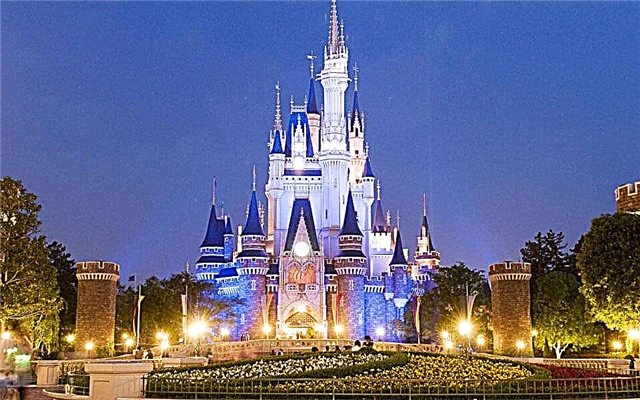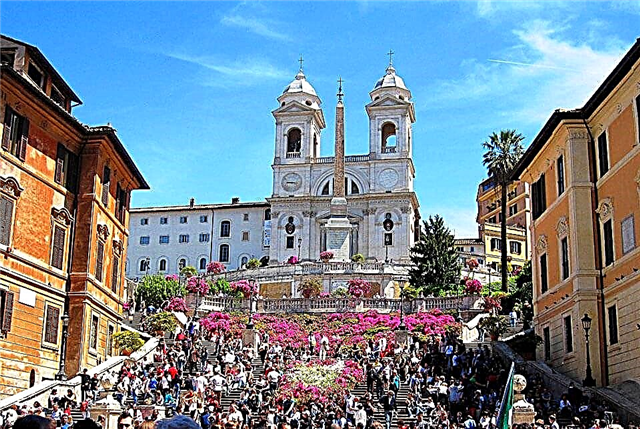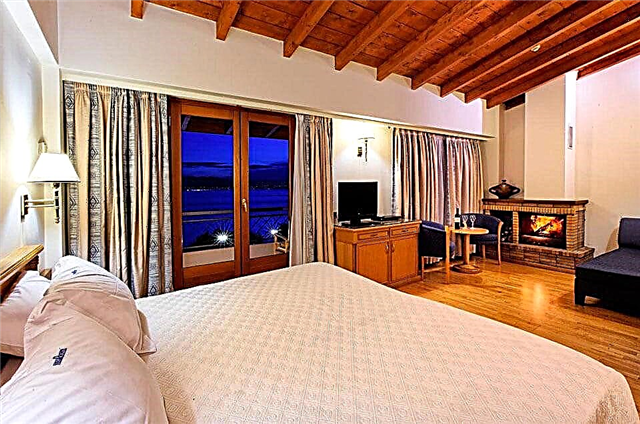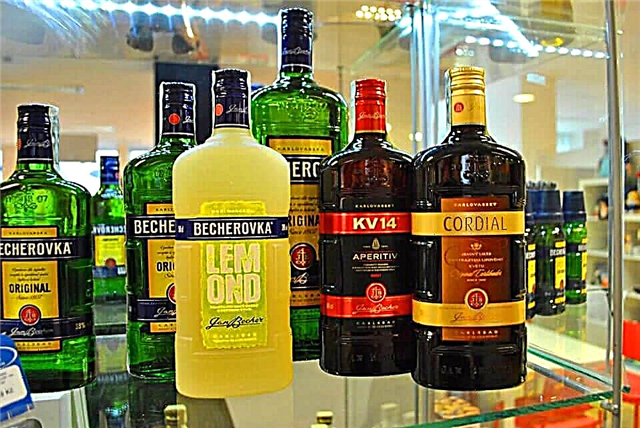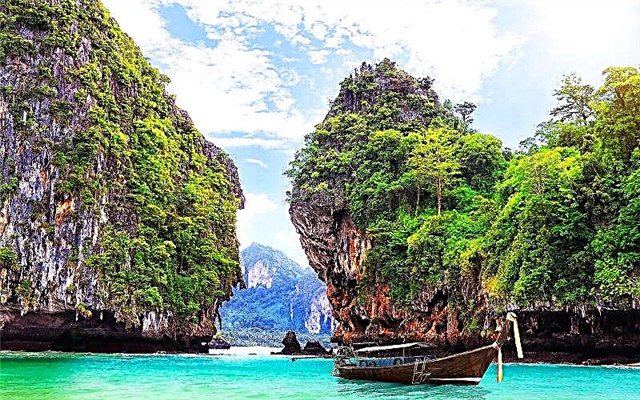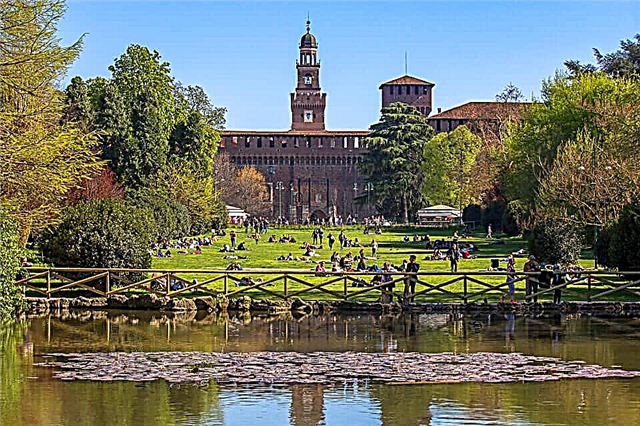Address: Russia, Moscow, Izmailovsky (Silver) Island
Main attractions: Bridge tower, Pokrovsky Cathedral, Front and Back gates of the Tsar's yard, Almshouse
Coordinates: 55 ° 47'31.8 "N 37 ° 45'39.0" E
Cultural heritage site of the Russian Federation
Content:
The history of the estate
The Izmailovo estate owes its name to its first owners - the Izmailov boyars, who laid it back in the 14th century. Then there were impenetrable forests, moving oak and birch forests. In 1573, the brother of Tsarina Anastasia, Nikita Zakharyin-Yuriev, received Izmailovo as a gift. Such a generous offering was made to him by John IV the Terrible himself. Subsequently, the village was inherited by his son, and then by his grandson, and in 1652 the estate returned to the royal treasury.

Izmailovo estate from a bird's eye view
In the 1670s, the construction of a royal residence began on this territory. Its central part was the Tsar's yard, that is, the estate itself. However, for the construction of the royal residence, the channel of the small Serebryanka river had to be divided into 2 branches and blocked. Thus, two large ponds were created. Having captured this zone in a "ring", the builders turned it into an island, and the royal estate took a central place on it. It took 10 years to build a new estate.
A stone bridge, laid at the Silver Pond, led to the royal chambers. The reliable bridge structure was 106 m long and over 10 m wide and was supported by arches. A multi-tiered Bridge Tower appeared near it in 1674, which can be seen today. In the old days, priests were located on the first floor of the tower, on the second was the seat of the Boyar Duma and the Senate. The upper tier of the tower became a bell tower for the five-domed Church of the Intercession of the Mother of God, which stands nearby.

Bridge tower
The estate was a favorite hunting ground for the Russian Tsar Alexei Mikhailovich and his retinue. And for such royal fun, animals were bred here. However, the king was attracted not only by the wealth and vastness of the hunting grounds. In the new estate, he started a semblance of "exemplary farm".
The estate had stocked ponds and beaver pens. Its economic part consisted of oil mills, apiaries, factories where flax and glass were made, wineries, water mills, cattle yards, fields, poultry houses, orchards and a vegetable garden where pharmaceutical herbs were grown. The estate was constantly replenished with new types of plants, unusual for the Moscow climate. Izmailovo greenhouses abounded in melons and gourds and decorative plants of rare beauty.

Cathedral of the Intercession
It is interesting that the first Russian zoo appeared here. In addition to the swan yard, on the territory of the royal menagerie there were cages with birds brought from exotic countries, as well as aviaries with tigers and leopards. Even an elephant lived in the zoo.
The main attractions of Izmailovo
The Izmailovsky Tsar's Palace was built of wood, and only its lower floor (basement) was made of stone. In terms of its architectural composition, it was similar to the palace building on the Kolomenskoye estate. On the territory there were about two dozen log cabins of different heights, connected by passages.

The front gate of the Tsar's yard
The similarity of these palaces does not at all mean their identical use by the royal family. So, the Izmailovsky Palace was the economic center of the estate, and the Kolomna Palace was needed only for entertainment and recreation. None of these palaces have survived, and their beauty can only be judged by the hotel and entertainment complex that appeared on the territory of Kolomenskoye a few years ago, as well as by the few descriptions of historians.
The ancient temple of Josaph was built in 1678, at the same time as the main part of the estate was being arranged. The two-storey building of the shrine was supplemented with a pair of side-altars, and a transitional gallery connected it with the palace. 9 years later, the church building was reconstructed in the Moscow Baroque style, and later a bell tower was added to the western side. Unfortunately, this church has not survived. It was destroyed in 1936, and to this day the place remains unoccupied.

Intercession Cathedral with the North, South, East buildings of the almshouse
The Church of the Intercession in the Izmailovo estate towered in the middle of the estate square, in front of the main gate. Before him, there was a wooden church in this place, which was built under Ioann Romanov. She personified the end of the Time of Troubles and the liberation of the Moscow lands from the Polish-Lithuanian troops. It took almost 8 years to erect the stone structure. Construction work from 1671 to 1679. On the day of the next celebration of the Protection of the Most Holy Theotokos, on October 1, 1680, the temple premises were consecrated by Patriarch Joachim.
The construction work for the construction of the Intercession Church was supervised by the architect Ivan Kuznechik, and they were carried out by a whole artel of out-of-town bricklayers. The best ceramists decorated the church with glazed tiles, and the church was crowned with gilded domes. In the church they kept the Pokrovskaya icon, which was the same size as the height of the 7-year-old prince. In addition, the list of the Jerusalem image of the Mother of God was also kept here, which showed its miraculous power in 1771, when the plague was raging in Moscow. Later, Napoleon's troops ravaged the Intercession Church.

The back gate of the Tsar's yard
The gate at the entrance to the Tsar's yard
At the very beginning, there was a spacious square in front of the Intercession Church. Today there is a public garden and a fountain in its place. All the buildings of the Tsar's court went out here, including two gates, which received the name Front and Back.
They were built in 1682. It seems that the same craftsmen were involved in the development of their project, since the composition and design of both gates are similar. At the bottom of the gate there are 3 openings - two narrow on the sides and one wide in the middle. In the middle tier there is a light octagon with narrow rumor windows. Initially, the octagon was surrounded by a gulbisch with painted windows, but in the 18th century it was dismantled. The current parapet on the second tier is made according to the scheme of the Russian architect Konstantin Andreyevich Ton.

Cast iron arch
Today, inside the Tsar's courtyard, a park is laid out, planted with groups of deciduous trees. If you look closely at the ancient buildings that stand along the perimeter of the rectangular courtyard, you can understand what the plan was for the arrangement of the royal estate. Its inner space was not only closed, but also specially fenced off from the outside world.
Once the central part of the courtyard was divided by an internal fence. In the north, there were Kormovoy and Khlebny courtyards, kitchens, storerooms, glaciers, the place where the archers were serving, as well as the buildings in which the managers lived. Barns, wood storage, stables, and a brewery lined the coastline of Grape Pond.

Monument to Peter I. Sculptor L.Ye. Kerbel
Kremlin
The Kremlin, erected in the estate already in our time, has combined the best architectural traditions of ancient Russian fortifications. A pond, a vineyard and a front garden with fragrant flowers appeared again on the spacious territory. The revived menagerie, stables and a poultry house filled the manor courtyard with life. Museum exhibitions, a mill and craft workshops help visitors to plunge into the past era of the estate.
The Kremlin is located on an elevated site, surrounded by a wooden palisade and stone walls. The old ensemble was helped to recreate the surviving drawings, prints and drawings. The Kremlin towers are decorated with multicolored tiles made using ancient technologies.

Fountain in front of the Intercession Church
The modern Izmailovo Kremlin has become a place of revival of Russian traditions.On its territory, festivals and fairs are held, crowded holidays are held, and folk ensembles perform. And the doors of the Palace of Happiness entering the Izmaylovo complex are always open for couples in love.
Visitors who want to see unique products and learn crafts have the opportunity to attend master classes. During them, they teach the making of ceramics, rag dolls, modeling and painting toys, and painting on wood and fabric. And those who want to feel like blacksmiths can try their hand at artistic forging.

Serebryano-Vinogradny Pond against the background of the reconstructed Izmailovsky Kremlin - cultural and entertainment complex
Vernissage is located not far from the territory of the Kremlin - a large exhibition and sale. Here are collected collections of items of decorative and applied creativity, works of fine art, artisan products and souvenirs. This fair has long become a favorite recreation place for residents of the city and its guests. The exhibition constantly brings together artists and craftsmen from different parts of the country.

